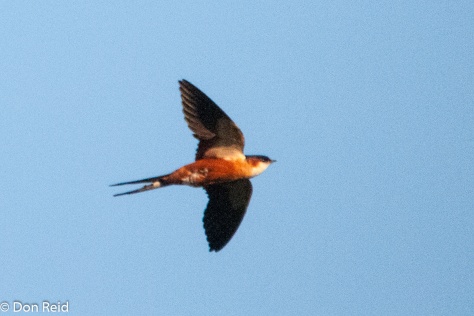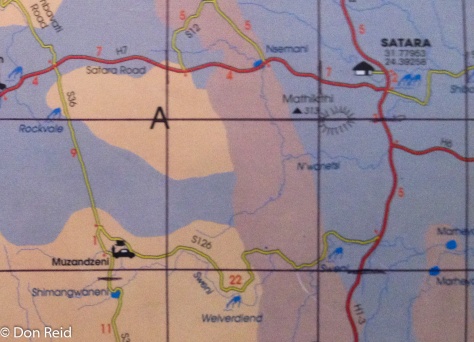The Route
This lesser known route is not renowned for its big five sightings but there is every chance of seeing a variety of game, with the added pleasure of getting off the beaten track for a while and enjoying a picnic spot that you will often have all to yourselves.
The route starts by heading south from Satara camp for about 10 kms where you turn right (west) on to the S 126 which marks the start of the gravel road to Muzandzeni picnic spot, a drive of about 22 kms which should take an hour or more, including stops to view game and birds as you come across them.
This stretch winds along the Sweni river for much of the way, but don’t expect there to be water during the winter months and early summer before the rains set in. The roadside scenery is dominated by many large trees, interspersed with open areas which look ideal for the big cats to use as hunting grounds.
After a break at Muzandzeni, whether for coffee/tea, or a full-blown brunch, the best way back to Satara is to complete the circle by heading north along the S 36 gravel road which joins up with the H7 Orpen-Satara tar road after about 10 kms and from there it’s an easy 20 km run along the H7 back to Satara, with a recommended stop at the Nsemani dam which usually has something of interest.
Habitat
This description from the krugerpark.co.za website sums up nicely what to expect along the Sweni river road (S 126):
“The Sweni River Road is a surprisingly tropical landscape given that it is so far south of the Tropic of Capricorn. Many old Kruger hands insist that it is the Sweni that marks the start of the north rather than the Olifants River. Southern Lala-palms and combretums dominate the grassy floodplains between the river and the road, giving the bush a distinctly Zimbabwean feel”
An extract from the Kruger Park map book shows the route :
The Drive
We made our way slowly along the S 126 to Muzandzeni, stopping for a number of raptors, including a pair of preening Bateleurs close to the road, which we sat and observed for some time, and a pale form of Wahlberg’s Eagle perched in a tall tree.



Vultures and particularly nesting Vultures were a feature of this drive as we encountered at least 4 different nests with Vultures in attendance. Vultures that we identified included the common White-backed Vultures, of which there were many, as well as the scarcer Lappet-faced, Hooded and White-headed Vultures.
The average visitor to Kruger probably won’t spend much time looking at vultures, other than to see if they are near a kill, but the chances of seeing four Vulture species on one drive are slim, so I for one was very appreciative of these sightings.



Rounding off the raptor feast was a large Tawny Eagle, always impressive to look at and ruggedly good-looking.

Game was a bit sparse compared to some of the other drives we had done around Satara but we nevertheless enjoyed some good sightings of small groups of the more common species, including Kudus backlit by the early morning light, a lone Steenbok resting in the grass and a few Dwarf Mongeese (oh-oh should have seen that coming, now I’ve got to figure out the plural of Mongoose – it’s actually Mongooses!)


Mosque Swallows were a nice surprise – in my experience they are usually only seen a lot further north in Baobab country.

Muzandzeni Picnic spot
The picnic spot has a remote feeling to it – like being in the “middle of nowhere” – don’t be surprised if an Ellie or two passes by on the way to the nearby waterhole, also favoured by Zebra amongst others.



Our brunch was leftover steak from the previous night’s braai, cut into strips and fried on the skottel with onions and tomato, then plied onto a hamburger bun – delicious!

Back to Satara
Heading back we were on the lookout for the lions at a buffalo kill that we had heard about from Andre’s brother Eddie, visiting from Holland, and sure enough they were at the spot he had described, near an almost bare buffalo carcass.
With the temperature nudging 38 degrees C, we were happy to head back to Satara for a relaxing rest of the day, having extracted the maximum enjoyment from yet another Kruger drive.

A surprise awaited us at the rondavel, in the form of a Fruit Bat , hanging under the thatched overhang – quite a cute looking bat don’t you think? Like a teddy bear with wings.

Sources :
Krugerpark.co.za
Sanparks Guide to Kruger National Park

